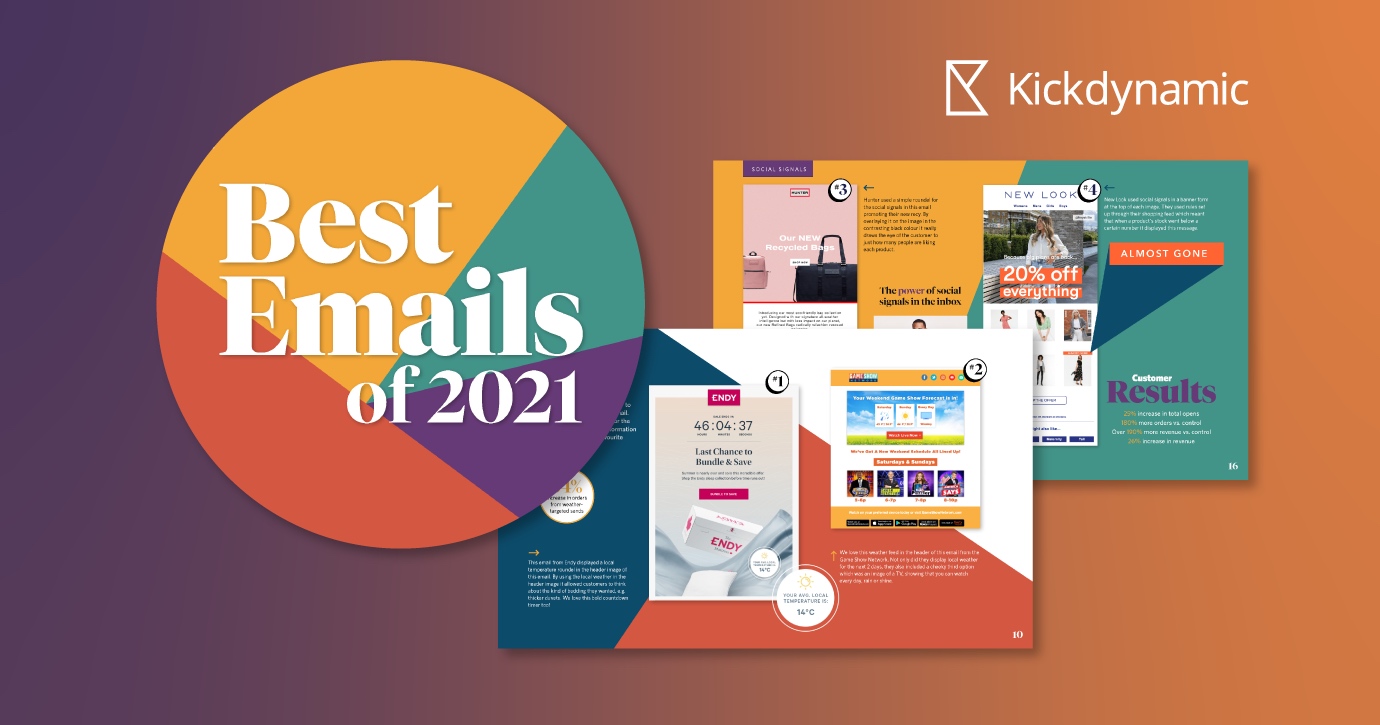Email Personalization—From Engagement To Conversion
If you haven’t noticed, we’re excited about email personalization and we think you should be too. Email personalization will continue to grow in importance because it’s what consumers want – and it’s been proven to convert. In fact, 80% of customers say they are more likely to make a purchase from a brand that provides personalized experiences and we think that’s reason enough to add email personalization to your strategy.
Here are ways to start personalizing your emails, add sophistication to existing campaigns, and how to get more use from the data you collect.
Email personalization starts with data
Before embarking on any personalization journey, the first step is to be clear on what your goals are and what information you hope to obtain with your email campaign. This will help you narrow down what data you need to collect and where there may be gaps as you work to move subscribers closer to conversion. Your campaign objectives will range depending on your business but could include: sales, event registrations, bookings, increasing average order value, or a variety of other options.
Once that’s solidified, it’s time to start getting your data in order. Start by focusing on your zero- and first-party data and then dig into your analytical tools to extract even more insight. From there, you may find it efficient to tap into tools that can help you make sense of your data. For example, data provided by your ESP and third-party tools like Litmus Email Analytics and Google Analytics can provide insight into what email clients your subscribers use, and how they engage with your messages.
If you have the data you need to personalize your emails, then you’re in great shape. If not, this is an opportunity to think about where you can collect more from subscribers. Despite consumers being increasingly aware and protective of their data online, they are still willing to exchange information for convenience from brands they trust. Think about ways to enhance your preference centers, change your sign up forms, or directly ask subscribers what they want to see more of from your brand. Combining this with details like website behaviors, purchase data, and interactions inside of campaigns can reveal insights you can use for personalization.
Dynamic content for email personalization
Email personalization relies on adding dynamic content to emails but what does that mean exactly? If you’ve ever opened an email that seems to have product suggestions tailored perfectly to your taste, that’s all thanks to dynamic content.
Dynamic content taps into data at the segmentation level or using CRM data by leveraging more advanced information like behavioral information to send personalized emails to each individual subscriber. This results in visually appealing imagery or customized messaging that caters specifically to your audience allowing you to build a strong brand connection and a level of trust with every send. And with the help of content automation tools, you can access unlimited versions of an email automatically generated, allowing you to personalize at scale.
When ramping up your email personalization, be sure to take a sensible, phased approach. Start with easy, quick wins and build from there. Leading with contextual targeting emails allows you to improve engagement with interactivity while gathering more data for CRM profiles. Utilizing live polls to learn what subscribers prefer, location based targeting for relevancy, or countdown timers to create urgency around sales.
Leveraging your CRM and data feed
As you learn more about your subscribers, you’re able to provide engaging email content and keep them interested longer. By combining your data feed or CRM data with automation, you can customize email personalization even further.
With this data, consider showing content based on subscriber’s behavior or category preferences. While this may sound obvious, it’s often a missed opportunity by brands. You can also show personalized content based on recency, frequency, or monetary factors such as price points. For example, showing someone products they browsed but didn’t purchase, sending an email with your most purchased products to those who recently visited your website, or targeting customers with similar priced items to previous purchases is a great way to re-engage and increase conversions.
Coming full circle with omnichannel
The audience insights gathered from personalization go beyond your next email campaign. With email being the cornerstone of most marketing strategies, tapping into your learnings can be a powerful way to inform your other channels and platforms on what resonates with your customers and how you can better target them for an omnichannel marketing approach.
Because of this, it’s important to focus on how you can get more from your email campaigns. When email campaigns are properly executed, they can unlock data about your subscribers that can help better tailor your messaging across all digital channels allowing you to deliver a level of consistency across channels to support the overall customer journey.
The power of personalization
Subscribers expect personalization and delivering on that is a necessity. The beauty of email is that it provides a unique perspective from people who have opted-in to receive your communication and fit your ideal customer profile. This makes them more inclined to provide details about their shopping behaviors, product preferences, and customer profile information in exchange for an experience specifically customized to them.
As marketers are constantly trying to work smarter in how they engage with audiences, email personalization allows you to automate your approach at scale. It can then be used at every stage of the journey, gently nudging subscribers to explore your brand, and ultimately, convert. The power of personalization for both brands and their subscribers is undeniable.
To learn more about unlocking email’s potential throughout the customer lifecycle, check out our latest webinar.

| Personalize your emails. Learn more about countdown timers and more personalization tools to enhance your customers’ email experience—with over 50 examples from leading brands. |

Maria Coleman
Maria Coleman was a Senior Content Marketing Manager at Litmus
